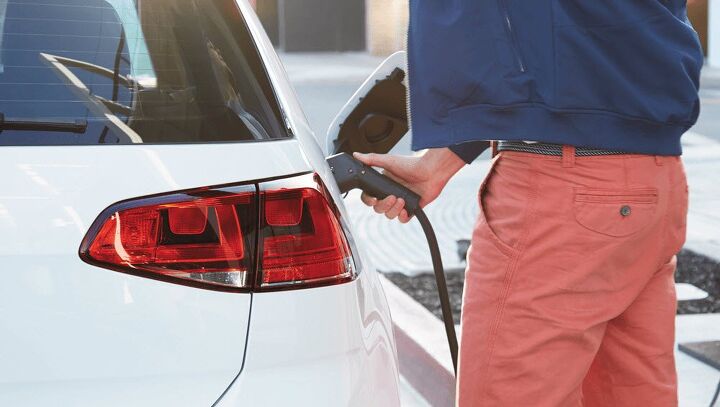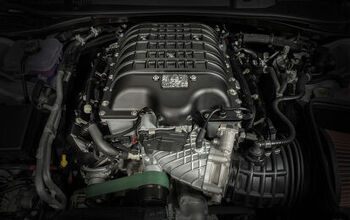Automakers Formally Take Aim at California's Zero-emission Vehicle Mandate

Compared to the rest of the United States, California is on the bleeding edge of government-appointed environmentalism. When the Trump administration suggested reexamining Obama-era fuel economy and emissions standards, The Golden State was the first to complain, saying it would not be adjusting its goals just because the rest of the country may. It also has pretty serious mandate on zero-emission vehicles — one that forces 15 percent of all new vehicles sold in the state to use zero-emission powertrains by 2025.
While California isn’t alone — nine other states have followed its lead since Trump took office — it is the keystone star on America’s flag pushing to maintain expand fuel regulations. Automakers have noticed and, despite previously having agreed with President Obama’s emission standards several years back, they’re launching a counter-offensive.
Arguing before a U.S. House panel, the Association of Global Automakers complained that California’s ZEV mandate threatens a single national standard for fuel economy.
On the one hand, the state seems impossibly ravenous for electrification and green solutions. On the other, most automakers have promised widespread electrification by 2025 anyway — so it shouldn’t really matter. But it does matter, and John Bozzella, president of the Association of Global Automakers, who told the House Energy and Commerce Committee why.
“The ZEV program produces no incremental nationwide [greenhouse gas] emission benefits despite the high burden placed on vehicle manufacturers. Current corporate average fuel economy and GHG emissions standards already specify each manufacturer’s total fleet-wide emissions, and therefore, in a system that averages together all vehicles in a manufacturer’s fleet, the fleet-wide emissions standards act as a cap when combined with an overall compliance fleet strategy,” he explained.
Automakers had previously changed their tune on corporate average fuel economy (CAFE), stating that the 2022-25 model year standards didn’t take into account compliance costs and lower-than-anticipated fuel prices. A 54.5 mpg average may be less feasible when gas is under $3 per gallon and everyone wants a crossover or SUV. (In its technical assessment report, issued before the 2016 decision to maintain existing CAFE targets, the EPA stated that current technological trends have light-duty vehicles on track to hit roughly 51 mpg by 2025.) But the Trump administration may move the goalpost even closer to appease manufacturers.
However, it’s worth mentioning that automakers have to take into account mandates from the EPA, NHTSA and California’s Air Resources Board. A separate ZEV quota for a handful of states complicates their strategy further. Looking at the situation from this angle makes manufacturers easier to sympathize with, and trade groups have made similar requests during NAFTA negotiations. The overriding theme here is for the government to keep things simple so manufacturing can stay predictable.
Of course, carmakers are also in the business of making money, and saving capital is just as good as generating revenue. According to Automotive News, Bozzella said the ZEV mandate has already cost the auto industry $24 billion.
“Manufacturers are also offering consumers massive incentives — in some instances as high as tens of thousands of dollars — to get them to buy electric-drive vehicles. The reality is that consumers are not embracing these technologies at the desired or projected rates, especially in states that are not investing sufficiently in the charging and hydrogen infrastructure needed to support the vehicles,” Bozzella told the House Committee.
Last year, EV sales didn’t make up one percent of the total new vehicle market. But California and several other states are bent on putting millions of zero-emission models on the road by 2025. Alliance of Automobile Manufacturers President Mitch Bainwol says he’s concerned consumers wouldn’t even buy advanced fuel-saving technologies if gas prices remained low.
He’s also disagreed with the EPA’s 2016 assessment that manufacturers should be able to meet the fuel mandates with advanced gasoline vehicles, citing a study by SAE International, Novation Analytics, and the Oak Ridge National Laboratory, that estimates just about every vehicle sold in the U.S. for the 2025 model year will need to be a hybrid to hit the mark.
Obviously, environmental groups oppose the suggestion that these regulations are too hard on manufacturers. Andrew Linhardt, deputy legislative director for transportation at the Sierra Club, said automakers were hypocritical to go after the ZEV program — especially considering “they are not doing any of the work to sell those vehicles.”
Likewise, Margo Oge, former director of the EPA’s Office of Transportation, stated she was “surprised and disappointed to see testimony from car companies attacking the importance of the ZEV mandate and how it is putting a burden on [said] car companies.”
(Correction: A previous version of this story stated that federal Corporate Average Fuel Economy (CAFE) targets had been lowered to roughly 51 mpg by the target year of 2025. Actually, the findings of last year’s technical assessment report stated that current trends would see the U.S. light duty vehicle fleet average 50-52.6 mpg by 2025. The preexisting 54.5 mpg target still stands. This story has been updated to reflect this.)
[Image: Volkswagen Group]

A staunch consumer advocate tracking industry trends and regulation. Before joining TTAC, Matt spent a decade working for marketing and research firms based in NYC. Clients included several of the world’s largest automakers, global tire brands, and aftermarket part suppliers. Dissatisfied with the corporate world and resentful of having to wear suits everyday, he pivoted to writing about cars. Since then, that man has become an ardent supporter of the right-to-repair movement, been interviewed on the auto industry by national radio broadcasts, driven more rental cars than anyone ever should, participated in amateur rallying events, and received the requisite minimum training as sanctioned by the SCCA. Handy with a wrench, Matt grew up surrounded by Detroit auto workers and managed to get a pizza delivery job before he was legally eligible. He later found himself driving box trucks through Manhattan, guaranteeing future sympathy for actual truckers. He continues to conduct research pertaining to the automotive sector as an independent contractor and has since moved back to his native Michigan, closer to where the cars are born. A contrarian, Matt claims to prefer understeer — stating that front and all-wheel drive vehicles cater best to his driving style.
More by Matt Posky
Latest Car Reviews
Read moreLatest Product Reviews
Read moreRecent Comments
- Redapple2 I think I ve been in 100 plants. ~ 20 in Mexico. ~10 Europe. Balance usa. About 1/2 nonunion. I supervised UAW skilled trades guys at GM Powertrain for 6 years. I know the answer.PS- you do know GM products - sales weighted - average about 40% USA-Canada Content.
- Jrhurren Unions and ownership need to work towards the common good together. Shawn Fain is a clown who would love to drive the companies out of business (or offshored) just to claim victory.
- Redapple2 Tadge will be replaced with a girl. Even thought -today- only 13% of engineer -newly granted BS are female. So, a Tadge level job takes ~~ 25 yrs of experience, I d look at % in 2000. I d bet it was lower. Not higher. 10%. (You cannot believe what % of top jobs at gm are women. @ 10%. Jeez.)
- Redapple2 .....styling has moved into [s]exotic car territory[/s] tortured over done origami land. There; I fixed it. C 7 is best looking.
- TheEndlessEnigma Of course they should unionize. US based automotive production component production and auto assembly plants with unionized memberships produce the highest quality products in the automotive sector. Just look at the high quality products produced by GM, Ford and Chrysler!


































Comments
Join the conversation
Is this a new weekly feature of finding articles to accompany the "salmon pant wearing dude who thinks he has to hold the electrical charging cord"?
Looks like it's time for another 6-month hiatus from the echo chamber. See y'all in May.